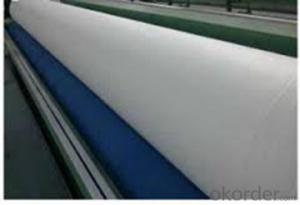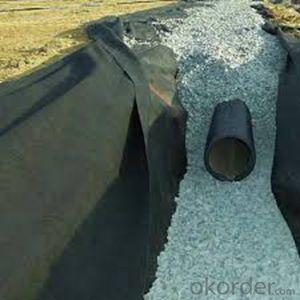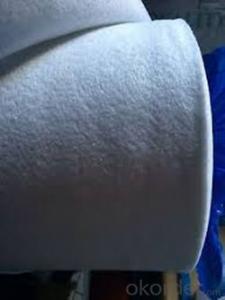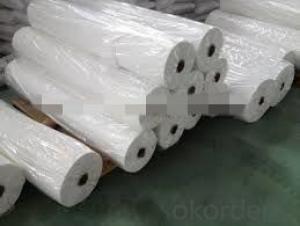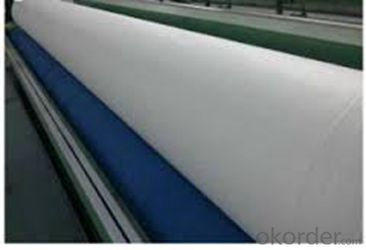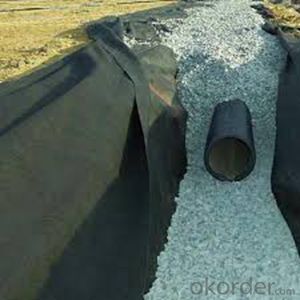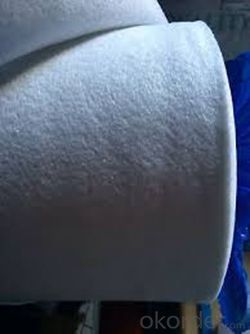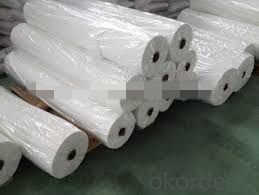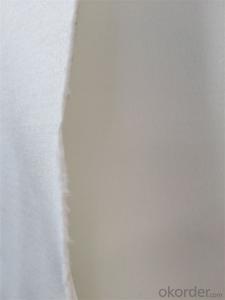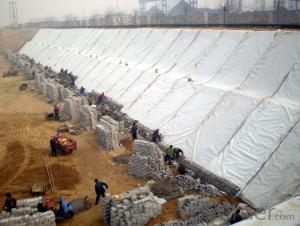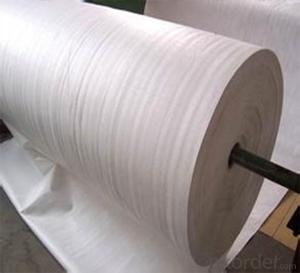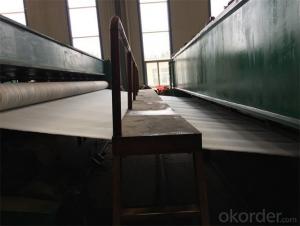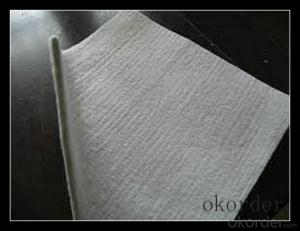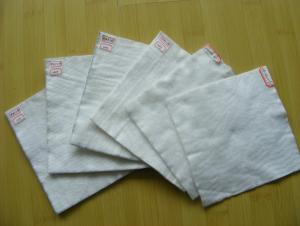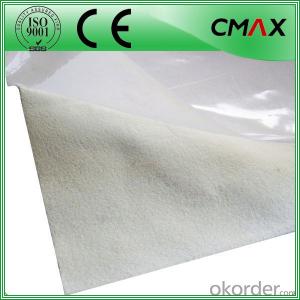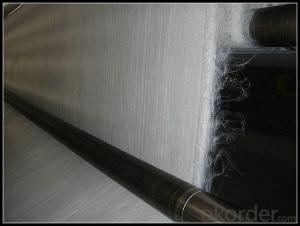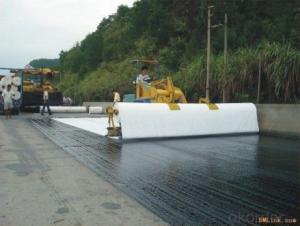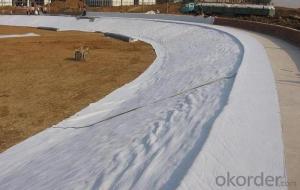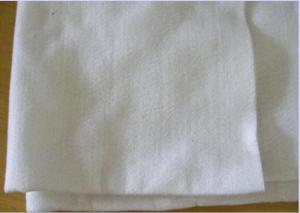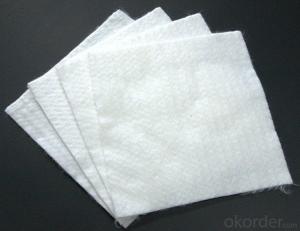100% Polyester Filament Non-woven Geotextile Fabric
- Loading Port:
- China main port
- Payment Terms:
- TT OR LC
- Min Order Qty:
- 1000 m²
- Supply Capability:
- 1000000 m²/month
OKorder Service Pledge
OKorder Financial Service
You Might Also Like
Specification
Filament Spunbond Nonwoven Geotextile Description:
Made from virgin PET(polyester)chips,the continuous filament was
extruded from PET chip by machine directly by spunbond process,
and then punch together to get the stable 3D with higher strength
fabric.So it has high strength, good creep property excellent and
erosion resistance,aging-resistance and heat resistance.
Filament Spunbond Nonwoven Geotextile Property:
Good creep property and hydraulics property,resistance to corrosion,
excellent anti-aging and heat-resistance quality.
Filament Spunbond Nonwoven Geotextile Application:
1.filtration of soils in drainage application by retaining soil particles
while allowing for the free flow of water
2.Separation and reinforcement in road and railway construction
3.Prevention of soil movement in erosion control measures
4.Cushioning and protection in many containment projects
Filament Spunbond Nonwoven Geotextile Production standard:
GB/T17639-2008
JT/T 519-2004
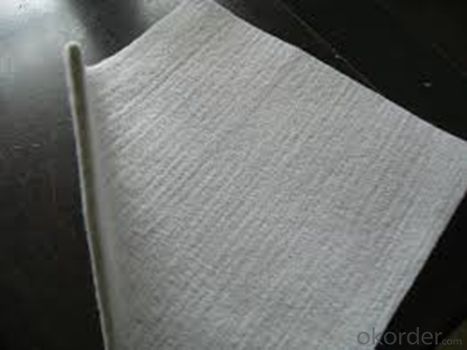
2. Features
Filament geotextile has features as follows: High strength, good capacity of elongation and high biology tolerance, alkali tolerance, acidity tolerance, weather resistance good filtration and fine drainage capacity etc. Also it is of low cost, easy in construction and use effects
3. Geotextile Applications
1) Filtration :
The filtration layer of the dykes, river canal, seacoast, concrete slope, retaining walls. At the same time of preventing the clay granule from passing, it allows the water and the gas pass through freely.
2) Separation :
The isolation of the railway dregs and the roadbed, roadbed and the soft base, surface of the airdrome and parking lot and the groundsill, different dam materials. It isolates the soil and the gravel of two kinds different granule pathway from the groundsill or other buildings.
Packaging & Shipping
Packing: PLASTIC FILM INSIDE, AND WOVEN BAG OUTSIDE
Shipping: About 15 days after receipt the deposit
geotextile fabric
permeability,filtration,easy for construction
ISO and CE certificate
Good quality and competitive price
Our Service
Quality assurance
1.On a regular basis or as per your request,we entrust national testing agencies to conduct quality inspections
2. Strictly in accordance with the ISO9001-2008 international quality system standard,we monitor and manage the whole process throughout production,quality testing,and measurement to ensure product quality
3. For quality-related construction delay or substandard construction(except for damage or losses due to customer’s responsibility or irresistible natural disasters),we have refunding,replacement,and repair services.We will respond to customers’ feedbacks on quality issues within 24 hours.
After-sales service
1.In order to provide customers with comprehensive technical support,we will provide technical and other related information upon request in a timely manner.
2.In required,we will appoint specialized technicians to the construction site to give technical trainings to construction people,and offer technical guidance throughout the whole construction process.
3.For damage due to shipment and delivery,after we receive the complaint,we will check the issure through provided pictures and videos.If our responsibility is confirmed,we wil offer free replacement.
4.When the construction is completed,as your request,our technical staff may participate in the final acceptance.
FAQ:
Q: What kind of payments does jenor support?
A: T/T, L/C, Cash are accepted.
Q: Do you charge for the samples?
A: Accordeing to our company policy, the samples are free, we only charge the freight fee. And we will return the freight fee during the next order.
Q: Can you produce according to customers' design?
A: Sure, we are professional manufacturer, OEM and ODM are both welcome.
Q: Do you have other products?
A: Yes, please check the pictures:
- Q: What are the specifications for geotextiles in subsurface drainage projects?
- The specifications for geotextiles in subsurface drainage projects typically include factors such as the material type, weight, thickness, and permeability. These specifications ensure that the geotextile is capable of effectively filtering water and preventing soil particles from clogging the drainage system. Additionally, the specifications may outline requirements for strength, durability, and UV resistance to ensure the geotextile can withstand the environmental conditions in the subsurface drainage projects.
- Q: What are the benefits of using geotextiles in construction projects?
- Geotextiles offer several benefits in construction projects. Firstly, they provide excellent soil stabilization, preventing erosion and maintaining the integrity of the structure. Secondly, they enhance drainage and filtration, allowing water to flow through while retaining soil particles. Additionally, geotextiles act as a barrier against weed growth, reducing the need for chemical herbicides. Lastly, they improve the overall lifespan and durability of the construction by reinforcing weak areas and distributing loads evenly.
- Q: How do geotextiles help with embankment stabilization?
- Geotextiles help with embankment stabilization by providing reinforcement and erosion control. They are placed within the embankment to distribute the load and increase its stability. Additionally, geotextiles prevent soil erosion by allowing water to drain through them while retaining the soil particles, thus preventing soil loss.
- Q: 200g geotextile how much money a square
- Geotextile laying - including the labor costs (according to geotextile specifications and laying conditions and requirements are different), material costs (specific quality requirements and thickness, are not the same ..), mechanical use costs (such as transport, sewing System, hoisting, etc.). The price is different. Sometimes the construction of our geotextile laying, the price per square meter from 9 yuan to 50 yuan range.
- Q: How many grams of geotextiles on the top of the garage
- We would like to consult a professional company.
- Q: How do geotextiles help with sediment retention in sediment basins?
- Geotextiles help with sediment retention in sediment basins by acting as a barrier that filters and separates sediment from water. They allow water to pass through while trapping and retaining sediment particles, preventing them from being washed away. This helps to reduce erosion and sedimentation in the basins, promoting cleaner water discharge and maintaining the overall effectiveness of the sediment basin.
- Q: What are the advantages of using geotextiles in wetland restoration projects?
- There are several advantages of using geotextiles in wetland restoration projects. Firstly, geotextiles provide effective erosion control by stabilizing the soil and preventing it from washing away during heavy rainfall or flooding. This helps in maintaining the wetland's structure and preventing further degradation. Secondly, geotextiles act as a barrier, preventing the migration of harmful substances such as pollutants or excess nutrients from adjacent areas into the wetland, thus protecting its ecological integrity. Additionally, geotextiles can enhance vegetation growth by retaining moisture in the soil, promoting root development, and preventing weed growth. This ultimately contributes to the overall success of wetland restoration efforts.
- Q: Can geotextiles be used in water retention projects?
- Yes, geotextiles can be used in water retention projects. Geotextiles are permeable fabrics that can help in water filtration, drainage, and erosion control. They can be used to line reservoirs, ponds, or other water retention structures to prevent soil erosion and retain water.
- Q: What are the factors to consider when specifying geotextiles?
- When specifying geotextiles, there are several factors that need to be considered. These include the intended application, site conditions, required strength and durability, permeability requirements, installation and maintenance considerations, and cost-effectiveness. It is important to carefully evaluate these factors to ensure the geotextile selected will meet the specific needs of the project and provide the desired performance and longevity.
- Q: Composite waterproof board, is the waterproof board and geotextile stick together call it?
- Yes. Now there are mainly adhesive technology, thermal composite process, Laminating process.
Send your message to us
100% Polyester Filament Non-woven Geotextile Fabric
- Loading Port:
- China main port
- Payment Terms:
- TT OR LC
- Min Order Qty:
- 1000 m²
- Supply Capability:
- 1000000 m²/month
OKorder Service Pledge
OKorder Financial Service
Similar products
Hot products
Hot Searches
Related keywords
